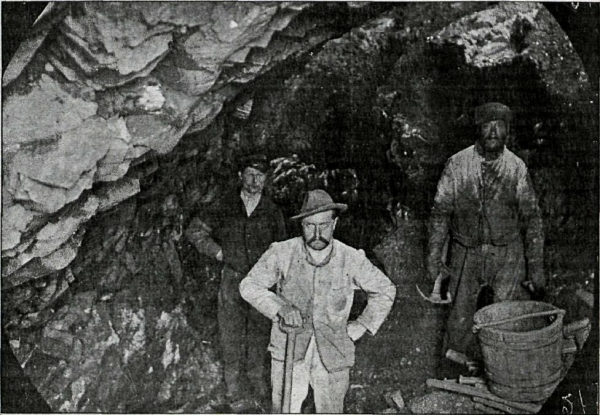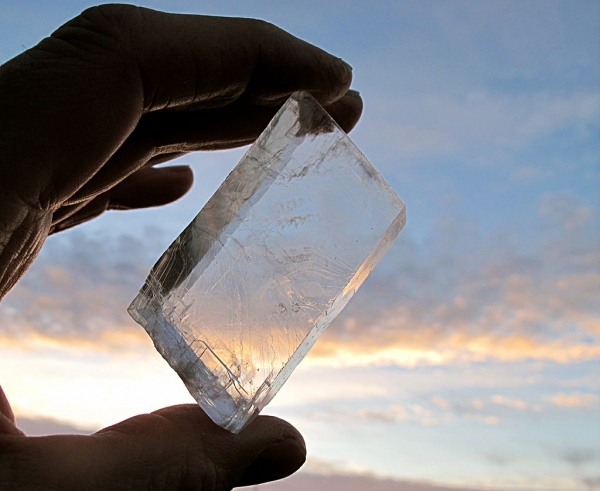Helgustaðanáma spar mine, one of most important locations in the world where Iceland spar is found is in danger of being destroyed, losing its value as a protected natural site, due to theft of crystals by visitors. Iceland spar, known as silfurberg (silver-rock in Icelandic) is a rare form of crystallized calcium carbonate which is only found at a handful of locations world-wide. In addition to Iceland it has been found at sites in China Mexico and New Mexico.
A protected site in danger due to tourism

Seven years ago the site was added to the red list of Icelandic nature reserves which are in danger of being destroyed or of losing their value, but then taken off the list in 2014, as steps taken to preserve the site seemed to have born fruit.
Now, however, the Environmnet Agency fears the site could permanently destroyed due to growing tourism. To preserve the site the agency has pressed the government for more funds to hire additional guards to protect the mine and other protected sites in East Iceland. A spokesman for the agency told the Icelandic National Broadcasting Service the mine might have to be closed off entirely to preserve its value.
Viking sun-stone
Today Iceland spar is primarily of interest to collectors. Historically, however, it has been used both in navigation and in science.
Iceland spar has a unique property: A ray of unpolarized light, like sunlight, passing through the crystal divides into two rays of perpendicular polarization directed at different angles. This double refraction can be used to find the precise location of the sun, even when the sun is completely hidden by clouds or the horizon during twilight.

Historians believe the Vikings used Iceland spar to help them navigate the oceans. During the 17th-19th centuries Iceland spar was then used by scientists to study the nature of light.
A unique source of a rare crystal
Helgustaðanáma mine was first opened during the 17th century. It remained in operation until the late 19th century, although spar continued to be mined at the site until the mid-20th century. During this time it was one of the most important sources of Iceland spar worldwide. Since then it has been declared a protected nature reserve, and all removal of spar was forbidden.
The mine, which produces unusually large and pure spar crystals. It is a popular destination due to the relative ease with which it can be reached, at the end of a short hike up to the hillside leading up to Víkurheiði heath by Reyðarfjörður fjord in East Iceland.
Since the mine was closed the site has continued to be visited by private mineral collectors who have scavenged the site for crystals, despite the ban on removing any stones from the site. Now the Icelandic Environment Agency fears that this traffic is threatening the value of the site which is being stripped clean and the site vandalized by rock collectors.
Helgustaðanáma spar mine, one of most important locations in the world where Iceland spar is found is in danger of being destroyed, losing its value as a protected natural site, due to theft of crystals by visitors. Iceland spar, known as silfurberg (silver-rock in Icelandic) is a rare form of crystallized calcium carbonate which is only found at a handful of locations world-wide. In addition to Iceland it has been found at sites in China Mexico and New Mexico.
A protected site in danger due to tourism

Seven years ago the site was added to the red list of Icelandic nature reserves which are in danger of being destroyed or of losing their value, but then taken off the list in 2014, as steps taken to preserve the site seemed to have born fruit.
Now, however, the Environmnet Agency fears the site could permanently destroyed due to growing tourism. To preserve the site the agency has pressed the government for more funds to hire additional guards to protect the mine and other protected sites in East Iceland. A spokesman for the agency told the Icelandic National Broadcasting Service the mine might have to be closed off entirely to preserve its value.
Viking sun-stone
Today Iceland spar is primarily of interest to collectors. Historically, however, it has been used both in navigation and in science.
Iceland spar has a unique property: A ray of unpolarized light, like sunlight, passing through the crystal divides into two rays of perpendicular polarization directed at different angles. This double refraction can be used to find the precise location of the sun, even when the sun is completely hidden by clouds or the horizon during twilight.

Historians believe the Vikings used Iceland spar to help them navigate the oceans. During the 17th-19th centuries Iceland spar was then used by scientists to study the nature of light.
A unique source of a rare crystal
Helgustaðanáma mine was first opened during the 17th century. It remained in operation until the late 19th century, although spar continued to be mined at the site until the mid-20th century. During this time it was one of the most important sources of Iceland spar worldwide. Since then it has been declared a protected nature reserve, and all removal of spar was forbidden.
The mine, which produces unusually large and pure spar crystals. It is a popular destination due to the relative ease with which it can be reached, at the end of a short hike up to the hillside leading up to Víkurheiði heath by Reyðarfjörður fjord in East Iceland.
Since the mine was closed the site has continued to be visited by private mineral collectors who have scavenged the site for crystals, despite the ban on removing any stones from the site. Now the Icelandic Environment Agency fears that this traffic is threatening the value of the site which is being stripped clean and the site vandalized by rock collectors.







